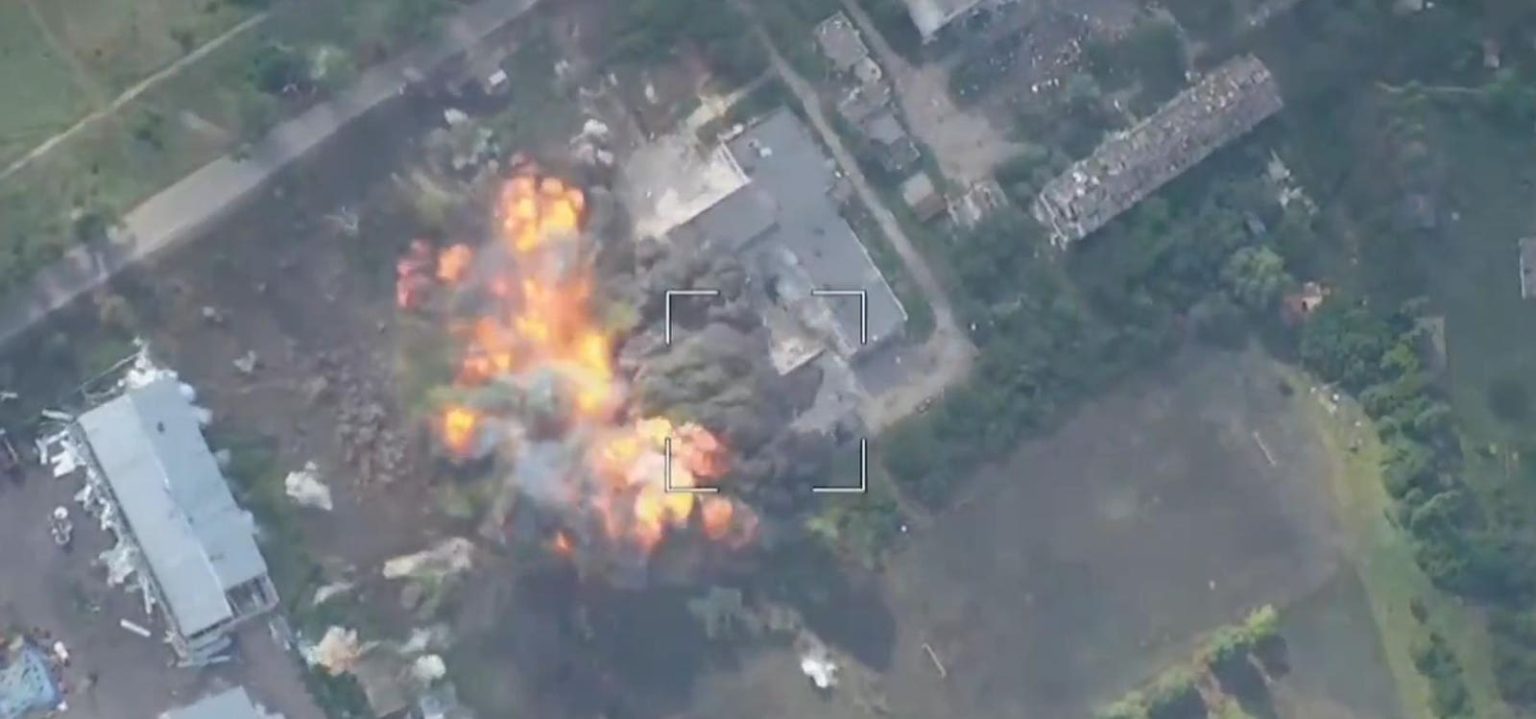The Russian air force recently dropped its 3.3-ton glide bomb for the first time in combat, showcasing its power and inefficiency. The bomb was dropped by a Sukhoi Su-34 fighter-bomber at a multi-story building in Lyptsi, believed to be a staging base for Ukrainian troops.
A day later, another Su-34 dropped the 6,600-pound FAB-3000 bomb at another suspected building housing Ukrainian forces. Despite missing their targets by a short distance, the huge bombs caused blast damage at a distance of more than 200 yards, propelling lethal fragments over 1,200 yards.
While the FAB-3000 is powerful, an Su-34 carrying smaller 3,300-pound FAB-1500s could be more effective. Dropping three FAB-1500s instead of one FAB-3000 allows for multiple chances to strike a target accurately, compensating for the potential inaccuracy of a single bomb.
The deployment of the FAB-3000 could be more for propaganda value than actual military utility, similar to the U.S. Air Force dropping the Massive Ordnance Air Blast bomb on Islamic State militants in 2017 as a show of force. The Russian air force reportedly did not build many FAB-3000s, and may soon return to using more efficient glide bombs.
Ukrainian forces have begun using radio jammers to disrupt the signals between Russian glide bombs and the satellites steering them, diminishing the accuracy of the bombs. This development could mark the end of the age of glide bombs with cheap satellite guidance systems and pave the way for more advanced military technology.
As the conflict in Ukraine continues to evolve, both sides are utilizing advanced weaponry and tactics to gain an advantage on the battlefield. The use of large glide bombs and the deployment of electronic warfare are shaping the dynamics of the conflict, highlighting the importance of technological superiority in modern warfare.


